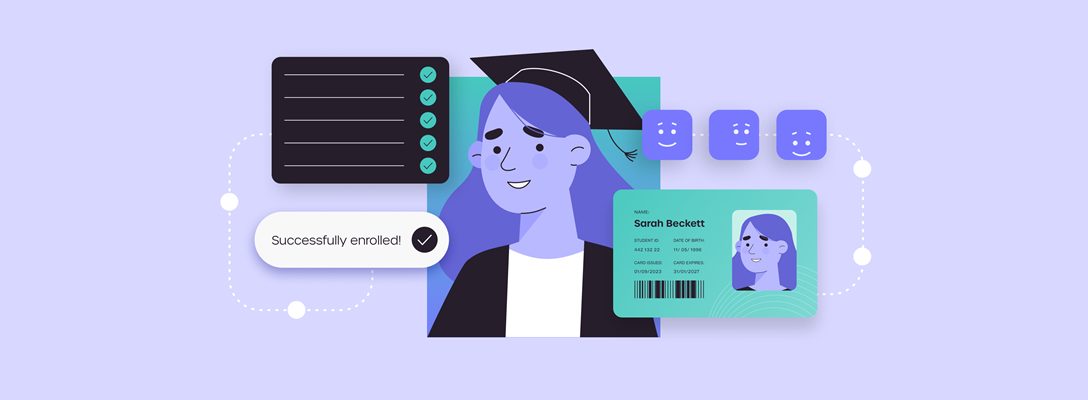
The role of identity verification technology in university systems
Universities are responsible for large amounts of personal student data, including academic, medical, and financial information. As part of this responsibility, they must protect students' information from fraudsters who might seek to exploit it for higher education scams. Currently, universities are faced with the challenge of balancing the need to verify students’ identities to ensure academic integrity while maintaining a frictionless customer experience.
In this blog, we’ll explore how identity verification technology can effectively prevent student identity theft and fraud in universities.
Rising threats of student identity theft and fraud in universities
The COVID-19 pandemic saw a significant shift to remote learning within the education industry. With this increasing reliance on technology came an increase in fraudsters masquerading as legitimate students through the use of fake or stolen identities. Often, fraudsters use these bogus identities to gain access to university systems and perpetrate student financial aid fraud.
Why is student identity verification important in university systems?
Prevent fraudulent enrolments
During the enrolment process, applicants are usually required to submit official identification documents such as driver’s licenses or passports. Identity verification technologies can quickly verify personal information extracted from the documents against trusted data sets to ensure authenticity. This stops individuals from enrolling fraudulently using stolen or altered documents as genuine.
Identity verification technologies also deter fraud by using biometric data to ensure that the individual submitting the application matches the provided documents. Passive liveness technology detects whether the image is of a real person taking the photo in real-time or a fraudster faking a selfie using an existing photo or video. These liveness checks happen in the background without any further action required from the student, providing a frictionless experience.
Prevent phishing attacks and data breaches
Universities store large amounts of personal student data such as medical and payment information which makes them vulnerable to phishing and data breaches. Implementing student identity verification provides an additional layer of security which reduces the risk of phishing and other cyberattacks. Student identity verification ensures that access to this information is protected from unauthorised access, providing an additional layer of security.
Check eligibility for fees and government grants
Using identity verification technologies, universities can simultaneously verify students’ identities and citizenship or residency status by accessing the Australian Government’s Document Verification Service (DVS) against eligibility criteria for existing grants and financial assistance. This allows them to confirm students’ eligibility for government assistance and student loans.
Improving user experience for staff and students
The ability to enrol anytime and anywhere improves the registration experience for students, particularly those living in remote areas or are residing overseas. The digitalisation of student verification also reduces the administrative burden on staff, especially during peak enrolment periods while maintaining stringent identity verification protocols.
How universities can use identity verification at different stages
Registration and attendance
Identity verification technologies eliminate the need for new students to validate in-person, effectively streamlining the enrolment process and reducing time and costs. Student passes can also be issued remotely, removing the need for in person collection. Through the use of biometric solutions such as facial verification and passive liveness detection, universities can ensure that passes are only issued to legitimate students. Identity verification technologies also use biometric information collected from students to ensure that the student attending an online class is the same student enrolled in the course.
Examinations
Using remote proctoring services, universities can ensure that the identity of the student attending the exam is the same as the one enrolled. Before an online exam, the student’s selfie is compared to their original identity document. This authentication process also delivers the examination link only to legitimate students, helping keep fraudsters out.
Universities such as the University of Technology Sydney (UTS) have successfully implemented identity verification technology during examinations through AI invigilated software. This software verifies students’ identities by taking a photo of both the student and their photo ID to check for a match, ensuring that the right student is taking the right exam.
The rise of remote learning underscores the growing significance of identity verification technologies within university systems. For further information on how greenID’s identity verification platform can be tailored to deter university fraud, visit https://gbg-greenid.com/.
Sign up for more expert insight
Hear from us when we launch new research, guides and reports.